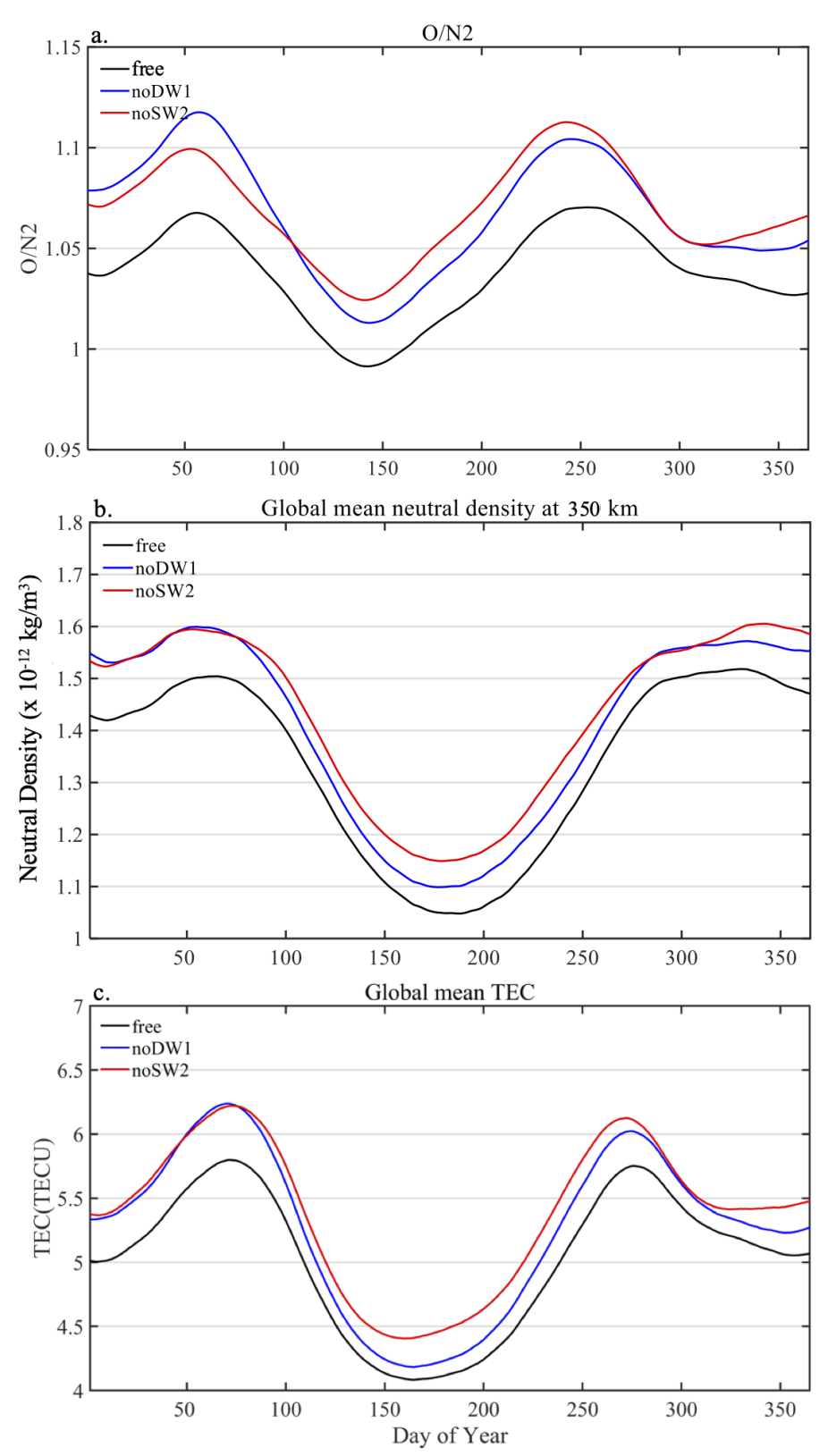
Seasonal variation of the global mean (a) O/N2, (b) TEC, and (c) neutral density at 350 km in WACCM-X. The results are shown for the control simulation with all tides (black), simulation without the migrating diurnal tide (noDW1, blue), and simulation without the migrating semidiurnal tide (noDW2, red). The results illustrate the impact of the diurnal and semidiurnal tides on the seasonal variation of the thermosphere composition and neutral density as well as the ionosphere electron density.
JGR Space Physics: The Whole Atmosphere Community Climate Model with thermosphere-ionosphere eXtension (WACCM-X) is used to investigate the impact of the upward propagating migrating diurnal (DW1) and semidiurnal (SW2) tides on the seasonal variability in the ionosphere and thermosphere. In the lower thermosphere, the tides induce a westward acceleration that obtains maximum values of 10-20 m/s around solstice. The tidal dissipation also changes the meridional circulation and leads to a ~5K cooling of the lower thermosphere. These changes result in a decrease in atomic oxygen in the lower thermosphere that maximizes during local winter. In the lower thermosphere, the DW1 has a greater impact around December solstice, while the SW2 has a greater impact around June solstice. The DW1 and SW2 induced changes in the lower thermosphere composition lead to changes in the thermosphere column integrated atomic oxygen to molecular nitrogen ratio (O/N2). This leads to a reduction in the thermosphere annual variation at middle to high latitudes. The DW1 and SW2 also reduce the thermosphere neutral mass density. In the ionosphere, the DW1 and SW2 decrease the zonal and diurnal mean total electron content by ~20% globally, which is primarily attributed to the reduction in thermosphere O/N2. The SW2 is found to have a greater influence on the low latitude ionosphere compared to the DW1 due to the SW2 having a greater impact on the equatorial electrodynamics. The results demonstrate that the upward propagating DW1 and SW2 both have significant effects on the ionosphere and thermosphere, including influencing the seasonal variability.